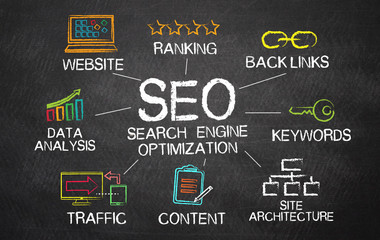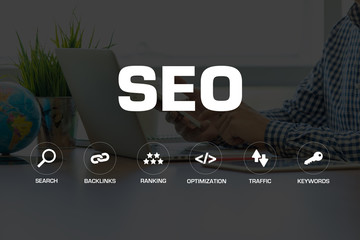Local map listings appear on search engine results pages (SERPs) for searches with local intent. They feature a map with three local business listings and include their contact information, hours of operation, and reviews from previous customers.
Optimal map listing placement can increase search visibility and drive immediate actions like website visits and phone calls. By prioritizing listing platform optimizations, you can achieve long-term success in local search. Visit Website to learn more.
Local SEO optimizes a business’s online presence to attract customers searching for products and services within their immediate area. It focuses on keywords that are specific to a local market and is distinct from global SEO, which targets broader terms with no geographical restriction. Local map listings are an essential part of a business’s local search strategy and can improve its organic SEO ranking.
A well-optimized local map listing can help businesses increase their visibility and generate more foot traffic and website visits. It also builds trust and credibility with potential customers. In addition to optimizing their websites and GMB listings, businesses should ensure that all of their online content is optimized with relevant local keywords and update them regularly.
Google and other search engines prioritize local businesses when users conduct location-based searches. These businesses appear in the “Local Pack,” a prominent section of search results that includes a map and a list of businesses related to the user’s query. To be eligible to appear in the Local Pack, businesses must claim and verify their Google Business Profile listing. Once verified, they can edit their information and add photos, hours of operation, and customer reviews to their Google listing.
A local map listing that is rich in visual content can encourage potential customers to call or visit your business. For example, a customer can see pictures of your storefront or team members before they make a purchasing decision. This helps build trust and strengthens the relationship between the client and business, which can lead to repeat and referral business.
A complete and updated Business Profile can improve a business’s local search visibility and organic SEO ranking. It can also be a source of direct engagement, with customers able to call or visit your business with just one click from your local map listing. Additionally, customers are 2.7X more likely to consider your business as reputable if they find it with a complete Business Profile on Google Search and Maps. Furthermore, customers are 68% more likely to click on a local pack result than an organic search result.
Google Maps
Google Maps is a powerful tool that businesses can use to connect with local consumers. It helps users find businesses that meet their needs, such as a vegan restaurant or an art gallery in Portland. Optimizing a business’s Google Maps listing can increase its visibility and revenue growth. In addition, a well-optimized map listing can also improve a business’s organic search ranking.
When someone searches for a business, Google uses the following criteria to determine which business is displayed: relevance, distance, and prominence. This is a dynamic process that constantly changes to accommodate user search intent. Consequently, businesses should focus on maximizing their online presence through strategies such as improving their content and increasing citations.
For example, a business that provides free Wi-Fi should make this clear on its website to attract customers and increase its Google Maps ranking. Businesses can also boost their visibility by embedding a Google Map on their contact page or other landing pages. By integrating their Google Maps listings into their websites, businesses can provide a seamless customer experience and build trust with potential clients.
Google recently updated its Local Services Ads (LSA) to include a new feature that lets people request services from businesses right within the Google Maps app. This update will give more exposure to local service providers and help them compete against traditional paid ads on Google Search and Maps.
In addition to ensuring that all your business information is correct, it’s important to add professional photos to your Google Maps listings. This will show that your business is active and compelling, and will attract more potential customers. It’s also important to keep your photos updated, especially if you open new locations or change your address.
Another strategy for boosting your Maps rankings is to promote positive reviews. This can be done by requesting satisfied customers to leave reviews, and by responding to all reviews, whether negative or positive. For instance, a coffee shop that offers free Wi-Fi should respond politely to customers who have expressed appreciation for their service and should address any concerns that may arise in less-than-favorable reviews.
Google My Business
When a potential customer searches Google for your product or service, it is important to make sure your business information is correct and complete on Google Maps. Google My Business (GMB) allows businesses to verify their location and edit all listing information including hours, website link, photos, and more. A correctly optimized GMB listing can improve local SEO, making it easier for customers to find your business.
Getting your GMB profile set up and verified is a crucial first step to maximizing your local SEO efforts. However, GMB isn’t a catch-all solution for local search success; it works best when used in tandem with other off-page and on-page optimization strategies.
A well-optimized GMB listing can help increase your local search visibility and improve customer engagement. Adding high-quality photos of your products or services is important, as is completing all business details, including hours, website address, and phone number. You can also use GMB to track reviews and post promotions.
Google’s local search ranking algorithm is complex, but there are some steps you can take to maximize your visibility. Optimizing your business’s Google My Business profile and ensuring it is accurate across all directories can help boost your rankings. In addition, focusing on creating positive reviews and directly engaging with your customers through Q&A and posts can improve your local search rank.
Embedding an interactive map on your website can be a great way to highlight your business’s physical address and attract more traffic from geographical searches. In fact, studies show that listings with maps have higher click-through rates than those without them. To get the most out of your map, be sure to use schema markup on the embedded map to signal relevance to geographic searches. Lastly, ensure your address is listed correctly on every page of your website, as this will help to boost your local search ranking. You can even include it in your footer or header to improve visibility. This can be especially effective for local-intent searches, as it will help the search engine know that your listing is relevant to those searching locally.
Social Media
A local map listing is an online profile that displays your business name, address, phone number, website and other relevant information. It is one of the most important marketing tools for local businesses because it helps potential customers find your company, and makes it easier for them to make a purchasing decision.
A detailed local map listing with high-quality visual content captures customer attention, builds trust, and drives immediate actions like website visits and calls. It also helps establish a positive connection with the customer before they ever meet you face-to-face, and reinforces that connection after they have interacted with your business.
Visuals are an important part of your local map listing because they convey the vibe and environment of your business. For example, if your location has a rustic, homey feel, your map listing photos should reflect this. In addition, your photos should showcase your products and services in action to build trust and credibility with your potential customers.
Adding photos to your local map listing will help boost your SEO, as search engines like Google prioritize media-rich listings. Including keywords in your photo descriptions and alt text will improve your chances of being discovered by searchers looking for your products or services. In addition, having consistent quality and style in your photos will create a cohesive story that aligns with your brand’s personality and values, creating a lasting impression with potential customers. Also, regularly updating your photos shows that you’re active and engaged with your local community. It also keeps your map listing fresh and relevant, which is a key component to attracting new customers.



